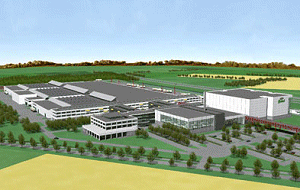 |
 |
|

|
|

|
 |
home
about
Protz
features
A-Z
books
|
|
Protz:
features
reviews
tastings
news & events
books
|

| |
Grolsch - big is (sometimes) beautiful
by Willard Clarke, 04/05
In 30 years of writing about beer I have come to agree more and more with the proposition put forward by the radical economist Ernst Friedrich Schumacher that "small is beautiful". In his
seminal work of 1973 he argues the case that companies worship size for size's sake and succumb to a disease he called giantism.
It is especially true of the brewing industry. Companies swallow one another with the voracity of piranha fish. Breweries disappear and their once-loved brands are either axed or are transferred to vast new factories
where they bear little or no relationship to the originals. All too often, it is accountants and marketing people who call the shots, not brewers. Brewing skills and tasty beers play second fiddle to the need to maximise
profits by producing beer as quickly as possible, regardless of the impact on taste or the preferences of drinkers.
But there are rare cases where breweries have grown organically rather than as the result of merger mania, a growth fuelled by genuine consumer demand. On my travels I have several times visited the
Grolsch breweries in the Netherlands and admired the company's dedication to quality and craftsmanship epitomised by the Pilsener beer in its old-fashioned "swing top" bottle.
I nevertheless approached Grolsch in January with some trepidation. The company has closed its original breweries in Enschede and Groenlo and built a new site at Boeklo close to the German border. $300 million has
been invested at Boeklo, which can produce 3.4 million hectolitres a year. In the Netherlands, Grolsch is a small brewer compared to mighty Heineken, which includes Amstel. But Grolsch is no slouch and
exports to 50 countries, with the U.S. and Britain its most important overseas markets. |
|

|
As
well as the Pilsener, it also brews an Alt-style Amber beer and several other brand made by warm fermentation: on a bitterly cold winter day, I was pleased to be greeted with a glass of 6.9% Noaber, a copper-colored
ale with rich malt, pear-like fruit and good hop resins. Noaber means "neighbour" and the beer was first brewed only for the eastern part of the country where Grolsch is based, but demand has expanded supplies.
Grolsch traces its roots back to 1615 though the modern company did not evolve until the 1920s and has only been known as Groslch since 1954. It is now a publicly listed company, but the de Groen family that
ran Grolsch in the 20th century still controls a substantial block of shares. To prove the family has not taken a back seat, I was shown round the new site by Andries de Groen, who wore the white coat of a brewmaster
rather than an executive pin-striped suit.

|
|
The brewhouse is enormous but attractive with stainless vessels built by Huppmann of Germany. The beer produced fills 60,000 bottles and 550 kegs every hour. But no corners have been cut where raw materials
are concerned. Water is pumped seven kilometers from Enschede to ensure consistency. Perle hops are sourced from the German Hallertau. The only change to the brewing regime is that the Pils is now an all-malt
brew. Grolsch has phased out the use of a small amount of corn. |
The company is building sales in Germany and is anxious to adhere to the Reinheitsgebot or Beer Purity Law that permits only malted barley or wheat,
hops, yeast and water.
"I didn't want an argument with the Germans," Andries de Groen said phlegmatically. He added that to balance the loss of corn he has added to the hop character of the beer. The fermentation regime has also been
altered. In the old breweries, some unfermented sugar was left at the end of primary fermentation. The beer is now fully fermented out and is followed by a shorter aging or lagering time. The beer is not pasteurised to
encourage a fresh and lively taste.
I have expressed concern elsewhere that lagering times are being reduced in many breweries, with a detrimental impact on flavor. But in the case of Grolsch I consider the beer from the new site to be even
better, with a new-mown grass aroma, toasted malt, light lemon fruit and hop resins in the mouth, and a finish that is dry, bitter and hoppy but balanced by juicy malt.
Beautiful beer, though no longer small.
|
|
home
about
Protz
features
A-Z
books
|